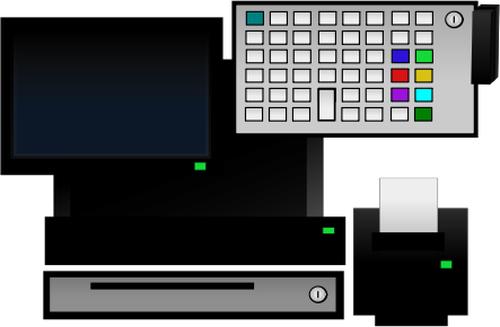Retail Automation Market Size, Share, Growth, Trends and Industry Statistics Report

The global retail automation market size is expected to reach USD 19.17 billion by 2025, at a CAGR of 8.7% according to a new report by Grand View Research, Inc. Retail automation technology is witnessing increasing demand among the growing urban population since it offers improved service quality and instant access to everything ranging from carts to food. Advantages such as business optimization and improvement in service quality have resulted in an increased penetration of the technology.
Additionally, there are huge opportunities for advancements in retail automation systems owing to the increasing usage of smartphones and enhanced internet accessibility. This, in turn, is expected to fuel the growth of the retail automation industry. The increasing adoption of the technology by a number of end users such as hypermarkets, supermarkets, convenience stores, fuel stations, and retail pharmacies is anticipated to boost the market over the forecast period.
The retail automation market has been segmented based on products into barcode and Radio-frequency identification (RFID), point of sale (POS), cameras, electronic shelf labels, autonomous guided vehicles, and others. RFID technology is enabling retailers to compete with online sellers as it helps facilitate regular inventory checks, which in turn leads to inventory accuracy. Self-checkout terminals have grown substantially due to the benefits that they offer for retailers in improving the customer experience. Automation is gaining significance as retailers are using a combination of mobile devices, self-checkout, digital kiosks, proximity beacons, and workforce and task management solutions to remain competitive in the market.
The growing awareness and popularity of retail automation are encouraging manufacturers to invest in research & development for creating better, more reliable, and cost-effective products. Manufacturers are making significant investments to develop new products in an effort to enhance user experience.
Further key findings from the report suggest:
- The growing demand for retail automation can be accredited to the increasing demand among retailers for business optimization and improvement in service quality.
- The growing penetration of Internet of Things (IoT) and enhanced internet accessibility, which help direct digital controls for improved Machine-to-Machine (M2M) communication, have encouraged retailers to adopt the retail automation technology.
- Innovative technologies such as artificial intelligence (AI), machine learning, digital traceability, and robotics are also some of the key factors expected to drive the demand for retail automation over the projected period.
- The North American region accounted for the largest market share in 2016, which may be attributed to its large consumer base.
- Some of the key industry participants include Diebold Nixdorf, Incorporated (U.S.), Fujitsu Limited (Japan), Honeywell International Inc. (U.S.), NCR Corporation (Georgia), and ZIH Corp. (U.S.).
Access full research report on global retail automation market: www.grandviewresearch.com/industry-analysis/retail-automation-market
Post Your Ad Here
Comments